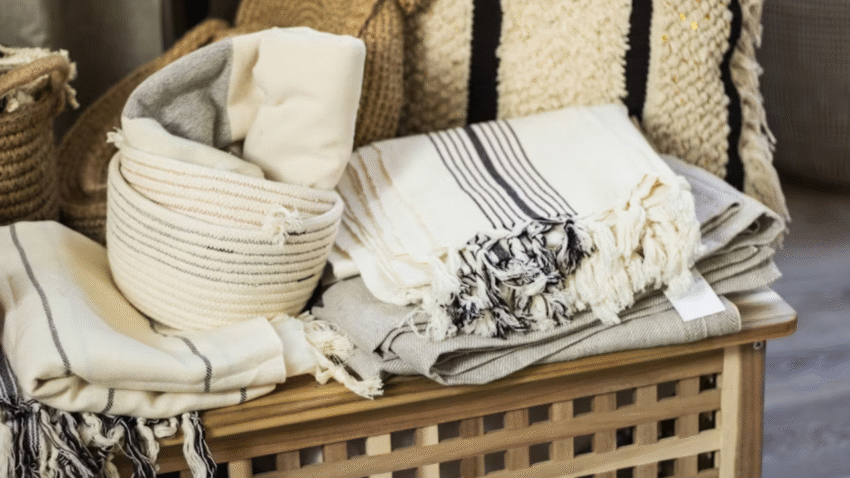Introduction
Every load of laundry sends gallons of water down the drain—water that, in many cases, could be reused. Greywater is lightly used water from sinks, showers, and washing machines. When recycled properly, it can be repurposed for tasks like watering gardens or flushing toilets, reducing your household water consumption and utility bills. This guide will walk you through how to recycle greywater from your washing machine safely and effectively, so you can conserve water and make your laundry routine more eco-friendly.
Why Recycling Greywater Matters for Your Laundry Room
Washing machines typically use 15–40 gallons of water per load. Recycling this water offers benefits such as:
- Reduced Water Bills: Lower your monthly utility costs.
- Eco-Friendly Living: Conserve freshwater resources and reduce strain on local water supplies.
- Garden Health: Greywater can hydrate plants if the right detergents are used.
- Emergency Use: Useful during droughts or water restrictions.
However, proper handling is essential to ensure greywater is safe for reuse.
Step-by-Step Guide to Recycling Washing Machine Greywater
1. Understand Greywater Safety Rules
Before setting up a system, check local regulations—some areas have specific rules for greywater use. Key safety points include:
- Do not use greywater for drinking, cooking, or bathing.
- Avoid contact with skin if the water contains harsh chemicals.
- Use plant-safe detergents without phosphates, bleach, or boron if using greywater for irrigation.
2. Choose Your Recycling Method
There are two main ways to collect washing machine greywater:
a) Manual Collection
- Place the washing machine’s drain hose into a large, clean container or drum.
- Use the collected water immediately to water outdoor plants (non-edible recommended).
b) Direct Diversion System
- Install a greywater diverter valve on the washing machine drain pipe.
- The valve allows you to send water directly to a garden irrigation system or storage tank.
3. Install a Greywater Diverter (Direct System)
Tools & Materials Needed:
- Greywater diverter valve kit
- PVC piping and fittings
- Hose clamps
- Teflon tape
- Basic plumbing tools
Steps:
- Turn off the washing machine and unplug it.
- Locate the drain hose at the back of the machine.
- Cut and insert the diverter valve into the drain line.
- Connect PVC or garden hose from the diverter to your irrigation area or tank.
- Seal all connections with clamps and Teflon tape to prevent leaks.
- Test the system by running a rinse cycle.
4. Use Greywater for the Right Purposes
Greywater is ideal for:
- Watering lawns, shrubs, and ornamental plants
- Flushing toilets (if piped indoors)
- Pre-rinsing dirty tools or outdoor equipment
Avoid using it on:
- Edible plants (unless water is filtered and treated)
- Seedlings or young plants that may be sensitive to detergent residue
5. Choose the Right Detergent
For garden-safe greywater:
- Use biodegradable, low-sodium detergents
- Avoid bleach, chlorine, or boron
- Choose liquid detergents—they leave less residue than powders
6. Maintain Your System Regularly
- Flush pipes monthly with clean water to prevent clogs.
- Inspect hoses and connections for leaks.
- Clean storage tanks every few months if storing water.
7. Seasonal Adjustments
- In rainy seasons, divert greywater to sewer or septic to avoid overwatering plants.
- In dry seasons, maximize greywater use for garden irrigation.
Common Mistakes to Avoid
- Using Greywater for Edible Crops Without Treatment
- Mistake: Can introduce harmful bacteria to food.
- Solution: Only use on ornamentals or filter/treat before using on edibles.
- Letting Greywater Sit Too Long
- Mistake: Standing water grows bacteria and smells.
- Solution: Use within 24 hours of collection.
- Using Harsh Detergents
- Mistake: Chemicals can harm plants and soil.
- Solution: Always use plant-friendly, biodegradable detergents.
- Ignoring Local Laws
- Mistake: Some areas have strict rules or bans on greywater use.
- Solution: Check and follow local regulations before installing a system.
- Overwatering Plants
- Mistake: Can lead to root rot and wasted water.
- Solution: Monitor soil moisture and adjust greywater use accordingly.
Extra Laundry Tips & Hacks for Greywater Users
- Install a Filter Basket: Catch lint and fabric fibers before water reaches plants.
- Alternate with Fresh Water: Occasionally water plants with fresh water to flush out detergent residue.
- Label Your System: Mark greywater pipes and tanks clearly to avoid accidental misuse.
- Use Shorter Cycles: Less water per load means easier storage and quicker use.
- Pair with Rainwater Harvesting: Combine both systems for a complete water-saving setup.
For more eco-laundry ideas, check out our “How to Wash Clothes with Less Water and Energy” guide to pair with your greywater recycling efforts.
Conclusion
Knowing how to recycle greywater from your washing machine is a powerful step toward sustainable living. By installing a simple collection or diversion system, using plant-friendly detergents, and following safety guidelines, you can repurpose laundry water for garden use, toilet flushing, and more—saving money and reducing environmental impact.
Pro Tip: Start with manual collection to test how much water you generate, then upgrade to a permanent greywater diversion system for long-term savings.
Bookmark this guide so you can set up your greywater recycling system and begin reusing laundry water safely.
